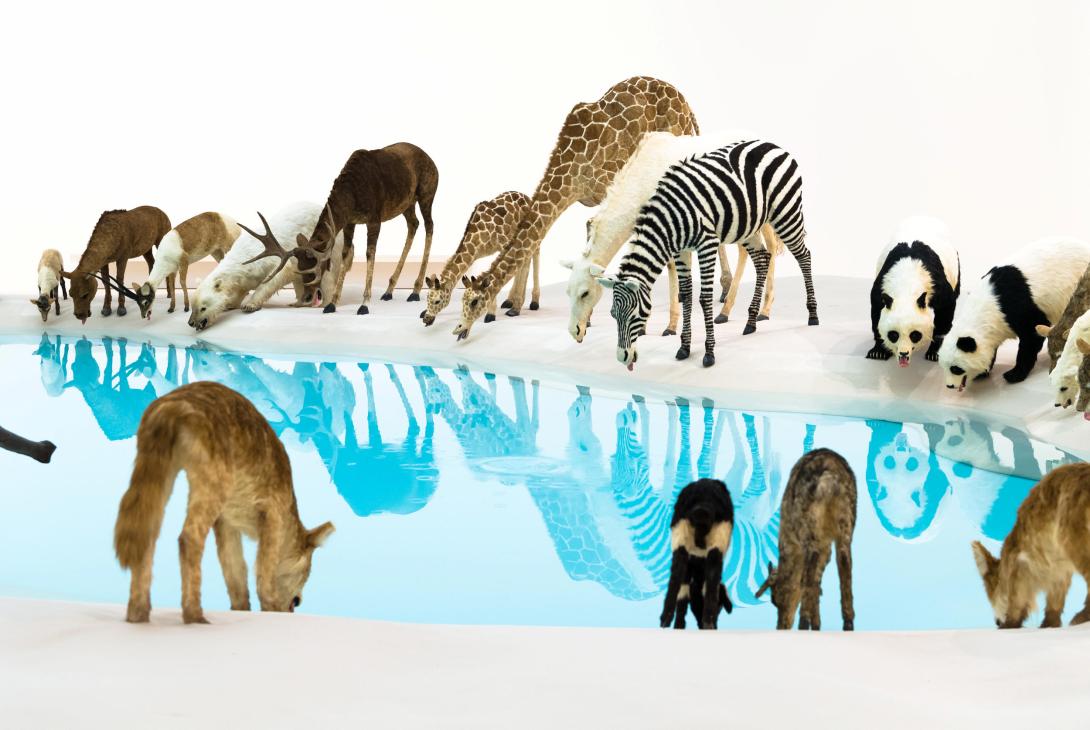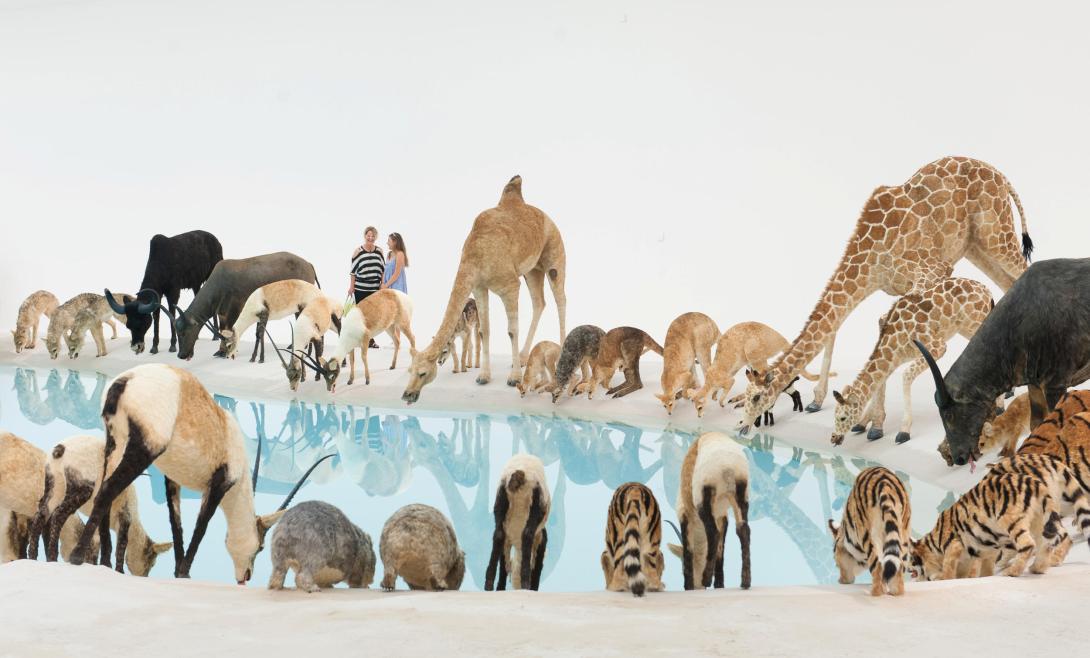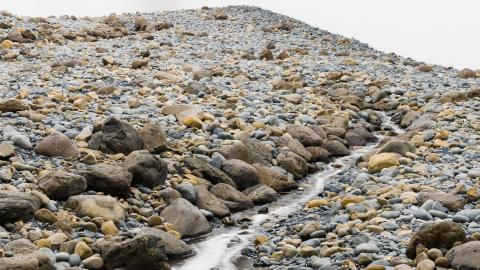Cai Guo-Qiang
‘Water: Cycles’
Inspired by the beauty of Minjerribah (North Stradbroke Island), Cai Guo-Qiang wanted to explore the idea of Australia as a ‘last paradise’. He imagined a circle of animals gathered around a single pristine waterhole, a place where, ‘Animals of all kinds — predators and prey, ferocious beasts and gentle animals — all of them depend on this body of water’.
In this version of the work, 45 animals from across the world pause to drink together. Heritage was first shown with 99 animals; however, the artwork is flexible in scale and can be presented in multiples of nine. These lifelike creatures — modelled from polystyrene, resin and dyed goat hair — congregate on the pure white sand, pausing for a moment to drink together. A single drip of water animates the glass-like surface of the pond, hinting at movement to come.
Cai describes this as a moment of ‘religious solemnity’ and is interested in representing underlying and at times opposing forces: peace and violence; tension and release; co-existence and competition. Is this a vision of idyllic harmony, or of an uneasy future in which a sole water source remains? What pushed the animals out of their natural habitats? What led such an unexpected array of species to come together to quench their thirst?

Cai Guo-Qiang / China b.1957 / Heritage 2013, installed at GOMA for ‘Water’, December 2019 / 99 life-sized replicas of animals: polystyrene, gauze, resin and hide / Dimensions variable / Commissioned 2013 with funds from the Josephine Ulrick and Win Schubert Diversity Foundation through and with the assistance of the Queensland Art Gallery | Gallery of Modern Art Foundation / Collection: Queensland Art Gallery | Gallery of Modern Art / © Cai Guo-Qiang / Photograph: Natasha Harth, QAGOMA
This frozen moment of peace carries a threat of impending chaos. As if, in a split second, instinct might suddenly be reactivated — the lion turning to assess its familiar prey, the gazelle. Other animals would be entirely unfamiliar to each other — what would the panda make of the kangaroo? As we balance competition with co-existence, Cai asks us to reflect on how evolutionary heritage impacts behaviour. This apparently calm idyll is animated by such questions. Cai muses, ‘If this is the last paradise on Earth, then the planet is in deep trouble’.

Cai Guo-Qiang / China b.1957 / Heritage 2013, installed at GOMA for ‘Water’, December 2019 / Photograph: Mark Sherwood, QAGOMA

Heritage 2013
- CAI Guo-Qiang - Creator
